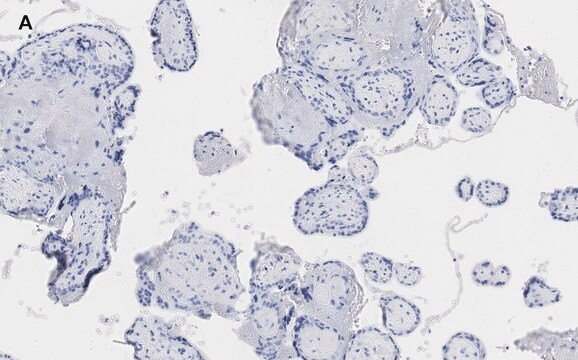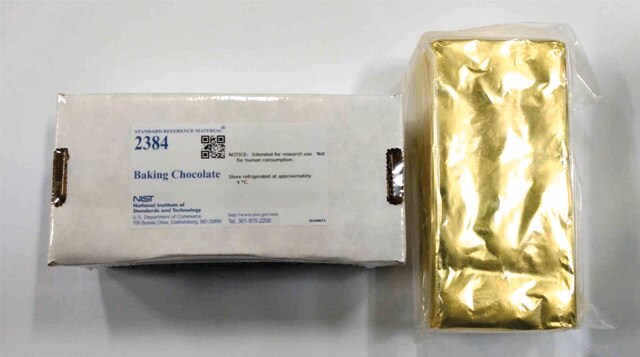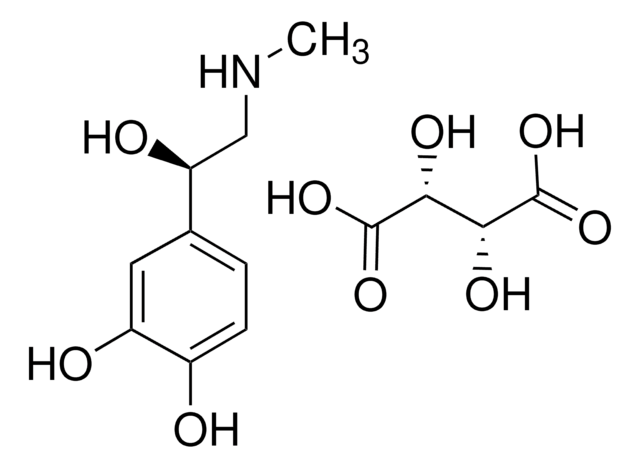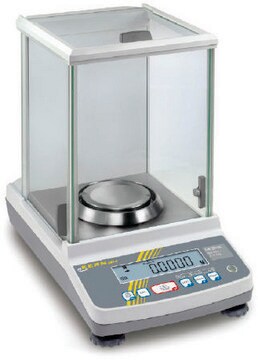Opis ogólny
Jesteśmy zaangażowani w dostarczanie bardziej ekologicznych produktów alternatywnych, które są zgodne z co najmniej jedną z 12 zasad zielonej chemii. To przeciwciało nie zawiera konserwantów, jest produkowane bez szkody dla zwierząt i wyjątkowo stabilne, aby umożliwić wysyłkę i przechowywanie w razie potrzeby, a tym samym jest zgodne z "Zapobieganiem powstawaniu odpadów", "Projektowaniem bezpieczniejszych chemikaliów" i "Projektowaniem pod kątem efektywności energetycznej".
Kliknij tutaj, aby uzyskać więcej informacji.
Przeciwciała 10889 reprezentują całkowicie nową generację rekombinowanych przeciwciał monoklonalnych. Każde przeciwciało 10889 jest wytwarzane przy użyciu naszego zastrzeżonego rekombinowanego systemu ekspresji, oczyszczane do jednorodności i precyzyjnie dozowane w celu uzyskania solidnej i wysoce powtarzalnej spójności między partiami. Do użytku badaczy udostępniane są wyłącznie klony o najwyższej wydajności. Każde przeciwciało jest sprawdzane pod kątem wysokiej swoistości i powinowactwa w wielu zastosowaniach, w tym w najczęściej używanym zastosowaniu. Przeciwciała 10889 są niezawodnie dostępne i gotowe do wysyłki, gdy są potrzebne.
Specyficzność
Klon 1I19 to rekombinowane królicze przeciwciało monoklonalne 10889, które specyficznie wykrywa receptor gamma aktywowany proliferatorami peroksysomów (PPARg). Celuje w epitop w obrębie 16 aminokwasów od regionu N-końcowego.
Immunogen
Liniowy peptyd sprzężony z KLH odpowiadający 16 aminokwasom z N-końcowego regionu ludzkiego receptora gamma aktywowanego proliferatorami peroksysomów (PPARg).
Zastosowanie
Testy kontroli jakości
Oceniane metodą Western Blotting w lizacie komórek PC3.
Analiza Western Blotting: Rozcieńczenie 1:1000 tego przeciwciała wykryło PPAR w lizacie komórek PC3.
Testowane aplikacje
Analiza immunocytochemiczna: Rozcieńczenie 1:100 z reprezentatywnej partii wykryło PPAR w komórkach PC3.
Analiza immunohistochemiczna (parafina): Rozcieńczenie 1:100 z reprezentatywnej partii wykryło PPAR w wycinkach tkanki ludzkiego łożyska.
Uwaga: Rzeczywiste optymalne rozcieńczenia robocze muszą być określone przez użytkownika końcowego jako próbki, a warunki eksperymentalne mogą się różnić w zależności od użytkownika końcowego.
Anti-PPARg, klon 1I19 10889, nr kat. ZRB1428, jest rekombinowanym króliczym przeciwciałem monoklonalnym, które specyficznie wykrywa PPARg i jest testowane do stosowania w immunocytochemii, immunohistochemii (parafina) i Western Blotting.
Opis wartości docelowych
Receptor gamma aktywowany proliferatorami peroksysomów (UniProt: P37231; znany również jako PPAR-gamma, receptor jądrowy podrodziny 1 grupy C członek 3) jest kodowany przez gen PPARG (znany również jako GLM1, NR1C3) (Gene ID 5468) u człowieka. Receptory aktywowane proliferatorami peroksysomów (PPAR) są członkami rodziny receptorów hormonów jądrowych czynników transkrypcyjnych, które pośredniczą w różnych procesach komórkowych, w tym w metabolizmie glukozy i lipidów, odpowiedziach zapalnych i regulacji apoptotycznej śmierci komórek. Działają one poprzez wiązanie się ze specyficznymi elementami odpowiedzi proliferatora peroksysomów (PPRE) na genach docelowych. Opisano trzy formy PPAR, które oznaczono jako formy a, g i d. Zawierają one domenę wiążącą DNA i domenę wiążącą ligand. Każda forma ulega ekspresji w różnych tkankach i może być aktywowana przez różne ligandy, przy czym większość z nich jest specyficzna dla jednej formy PPAR. PPARg jest głównie wyrażany w tkance tłuszczowej, a jego niższą ekspresję obserwuje się w mięśniach szkieletowych, sercu, wątrobie i śledzionie. Służy jako receptor jądrowy, który wiąże proliferatory peroksysomów, takie jak leki hipolipidemiczne i kwasy tłuszczowe. Po aktywacji przez ligand wiąże się ze specyficznymi dla DNA elementami odpowiedzi PPAR (PPRE) i moduluje transkrypcję genów docelowych. Kontroluje peroksysomalny szlak b-oksydacji kwasów tłuszczowych i jest kluczowym regulatorem różnicowania adipocytów i homeostazy glukozy. Pośredniczy w przeciwcukrzycowym i adipogennym działaniu tiazolidinedionów Defekty PPARg zostały powiązane z cukrzycą typu II oporną na insulinę i nadciśnieniem. Mutacje w genie PPARG zostały również powiązane z rodzinną lipodystrofią, która charakteryzuje się znaczną utratą podskórnej tkanki tłuszczowej z kończyn. To rekombinowane przeciwciało monoklonalne 10889, generowane przez naszą zastrzeżoną technologię, oferuje znacznie zwiększoną swoistość, powinowactwo, powtarzalność i stabilność w porównaniu z konwencjonalnymi przeciwciałami monoklonalnymi.
Postać fizyczna
Oczyszczone rekombinowane królicze przeciwciało monoklonalne IgG, liofilizowane w PBS z 5% trehalozą, o normalnym wyglądzie gruboziarnistej lub półprzezroczystej żywicy. Składniki PBS/trehaloza w preparacie 10889 mogą po liofilizacji mieć wygląd półstały (żel przypominający kulki). Jest to zjawisko normalne. Należy postępować zgodnie z zalecaną procedurą rekonstytucji zawartą w arkuszu danych, aby rozpuścić półstały, przypominający kulki materiał o wyglądzie żelu. Otrzymany roztwór przeciwciała jest całkowicie stabilny i funkcjonalny, co potwierdzają pełne testy funkcjonalne. Nie zawiera biocydów ani konserwantów, takich jak azydek, ani żadnych produktów ubocznych pochodzenia zwierzęcego. Większe opakowania są dostarczane jako wielokrotności 25 μL.
Przechowywanie i stabilność
Zaleca się przechowywanie liofilizowanego produktu w temperaturze 2-8°C. Przed rekonstytucją fiolki należy krótko mikrowirować, aby odwirować materiał na dno fiolki. Każdą fiolkę należy odtworzyć, dodając 25 μl przefiltrowanej wody laboratoryjnej lub PBS. Odtworzone przeciwciała można przechowywać w temperaturze 2-8°C lub -20°C w celu długotrwałego przechowywania. Unikać wielokrotnego zamrażania.
Informacje prawne
ZooMAb is a registered trademark of Merck KGaA, Darmstadt, Germany
Oświadczenie o zrzeczeniu się odpowiedzialności
O ile nie określono inaczej w naszym katalogu lub innej dokumentacji firmy dołączonej do produktu(-ów), nasze produkty są przeznaczone wyłącznie do użytku badawczego i nie mogą być wykorzystywane do żadnych innych celów, w tym między innymi do nieautoryzowanych zastosowań komercyjnych, zastosowań diagnostycznych in vitro, zastosowań terapeutycznych ex vivo lub in vivo lub jakiegokolwiek rodzaju konsumpcji lub zastosowania u ludzi lub zwierząt.
Ta strona może zawierać tekst przetłumaczony maszynowo.










